Related Research Articles
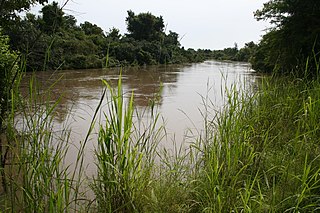
The W National Park or W Regional Park is a major national park in West Africa around a meander in the River Niger shaped like the letter W. The park includes areas of the three countries Niger, Benin and Burkina Faso, and is governed by the three governments. Until 2008, the implementation of a regional management was supported by the EU-funded project ECOPAS. The three national parks operate under the name W Transborder Park.. The section of W National Park lying in Benin, measuring over 8,000 km2 (3,100 sq mi), came under the full management of African Parks in June 2020. In Benin, W National Park is contiguous with Pendjari National Park which is also under the management of African Parks.
Lobamba is a city in Eswatini, and is one of the two capitals, serving as the legislative, traditional, spiritual, seat of government of the Parliament of Eswatini, and Ludzidzini Royal Village, the residence of Queen Ntfombi, the Queen Mother.
Oti-Kéran National Park is located in the north of Togo, in the Kara area. There is only one road going through this area. Not many tourists visit Togo as the main national parks are more accessible in Ghana.
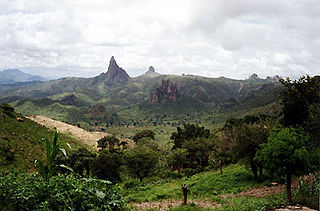
Rhumsiki, also spelt Rumsiki and Roumsiki, is a village in the Far North Province of Cameroon.

Benin has varied resources of wildlife comprising flora and fauna, which are primarily protected in its two contiguous protected areas of the Pendjari National Park and W National Park. The former is known for many species of avifauna and the latter park is rich in mammals and predators. In addition, many other forest reserves are noted in the country but are not easily accessible, well protected or adequately surveyed for its wildlife resources. The protected area system of Benin defined as National Protected Area System is situated in the northern Benin, mostly with a woody savanna ecosystem. It covers 10.3% of the national territory and is part of the three nation transboundary W-Arly-Pendjari (WAP) complex.

Tourism in Namibia is a major industry, contributing N$7.2 billion to the country's gross domestic product. Annually, over one million travelers visit Namibia, with roughly one in three coming from South Africa, then Germany and finally the United Kingdom, Italy and France. The country is among the prime destinations in Africa and is known for ecotourism which features Namibia's extensive wildlife.
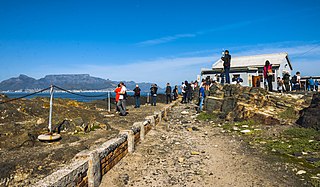
South Africa is a tourist destination with the tourist industry accounting for 2.34% of GDP in 2019 followed by a sharp drop in 2020 to 0.81% of GDP due to lack of travel caused by the COVID-19 pandemic. The official marketing agency for the country South African Tourism is responsible for marketing South Africa to the world. According to the World Travel & Tourism Council, the tourism industry directly contributed ZAR 102 billion to South African GDP in 2012, and supports 10.3% of jobs in the country. The official national marketing agency of the South African government, with the goal of promoting tourism in South Africa both locally and globally is known as South African Tourism.

Tourism in Myanmar is a developing sector. As at February 2022, new tourist visa applications continue to be suspended. Although Myanmar possesses tourist potential, much of the industry remains to be developed. The number of visitors to Burma is small compared to its neighbouring countries. This is primarily due to its political situation. However, after the junta transferred power to the civilian government, the tourism sector saw an increase in tourism arrivals, and in 2012, tourist arrivals surpassed the one million mark for the first time. In 2013, the Tourism Master Plan was created, targeting 7.5 million arrivals by 2020.

Botswana's principal tourist attractions are its game reserves, with hunting and photographic safaris available. Other attractions include the Okavango Delta region, which during the rainy season is a maze of waterways, islands, and lakes. The tourism industry also helped to diversify Botswana's economy from traditional sources such as diamonds and beef and created 23,000 jobs in 2005.
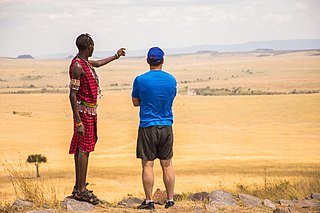
Tourism in Kenya is the second-largest source of foreign exchange revenue, following agriculture. The Kenya Tourism Board is responsible for maintaining information about tourism in Kenya.

There is a long history of tourism in Hungary, and Hungary was the world's thirteenth most visited tourist destination country in 2002. Tourism increased by nearly 7 percent between 2004 and 2005. European visitors comprise more than 98 per cent of Hungary's tourists. Austria, Germany, and Slovakia make the largest numbers of visitors to the country. Most tourists arrive by car and stay for a short period of time. Hungary's tourist season is from April through October. July and August are the best tourist months. Budapest is the country's most popular tourist destination.

Tourism in Uganda is focused on Uganda's landscape and wildlife. It is a major driver of employment, investment and foreign exchange, contributing USh 4.9 trillion to Uganda's GDP in the financial year 2012–2013.

Tourism is the most important nongovernment sector of Seychelles' economy. About 15 percent of the formal work force is directly employed in tourism, and employment in construction, banking, transportation, and other activities is closely tied to the tourist industry. Tourists enjoy the Seychelles' coral beaches and opportunities for water sports. Wildlife in the archipelago is also a major attraction.

Tourism in Burundi refers to tourism in Burundi. Bujumbura, the largest city and former capital of Burundi, is a major tourist attraction of the country. In addition to this, Lake Tanganyika is a popular tourist attraction.
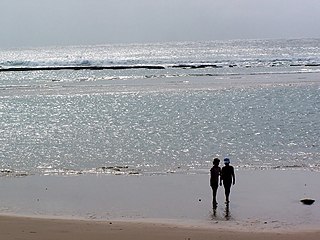
The tourism assets of Mozambique include the country's natural environment, wildlife, and cultural heritage, which provide opportunities for beach, cultural, and eco-tourism.

Tanzania is a country with many tourist attractions. Approximately 38 percent of Tanzania's land area is set aside in protected areas for conservation. There are 17 national parks, 29 game reserves, 40 controlled conservation areas and marine parks. Tanzania is also home to Mount Kilimanjaro, the highest point in Africa.
Malawi, officially known as the Republic of Malawi, is a country located in southeastern Africa. The country is also referred to as "The Warm Heart of Africa", due to the friendliness of the people.

Tourism is an important economic sector for many countries in Africa. There are many countries that benefit heavily from tourism like Uganda, Algeria, Egypt, South Africa, Kenya, Morocco, Tunisia, Ghana and Tanzania. The touristic particularity of Africa lies in the wide variety of points of interest, diversity and multitudes of landscapes as well as the rich cultural heritage. Also, an ecotourist industry is present in some African countries.

Arví Park is both an ecological nature preserve and Pre-Hispanic archeological site on the eastern slopes of Aburrá Valley, in the northeast area of Medellín, Colombia. The park covers several other municipalities of Antioquia, including Envigado, Bello, and Copacabana. It covers 16,000 hectares, 1,760 of which are in the state of natural forests. And it is equipped with 54 miles of walkable trails. It is a major tourist attraction, known for its wildflowers, butterflies and trails. Activities include hiking, nature tours, cycling, and outdoor adventure sports. An outdoor food market is located next to the gondola station. The Piedras Blancas Ecological Hotel and its private reserve are adjacent to the park.

The Benin–Burkina Faso border is 386 km in length and runs from the tripoint with Togo in the southwest to the tripoint with Niger in the northeast.
References
- 1 2 3 4 Williams, Stephen, Dec 2002, Benin: The belly of history, African History.
- 1 2 Taylor & Francis Group, 2003, Africa South of the Sahara 2004, Routledge, ISBN 1-85743-183-9, page 88.
- ↑ Benin: Overview, Lonely Planet
- ↑ Benin: Getting there & around, Lonely Planet
- 1 2 Leonard, Thomas M., 2006, Encyclopedia of the Developing World, Taylor & Francis, ISBN 0-415-97662-6, page 198.
- 1 2 Travel and Tourism in Benin, Euromonitor.
- 1 2 Hudgens, Jim, 2003, The Rough Guide to West Africa , Rough Guides, ISBN 1-84353-118-6, page 927.
- ↑ Benin: Sights, Lonely Planet.